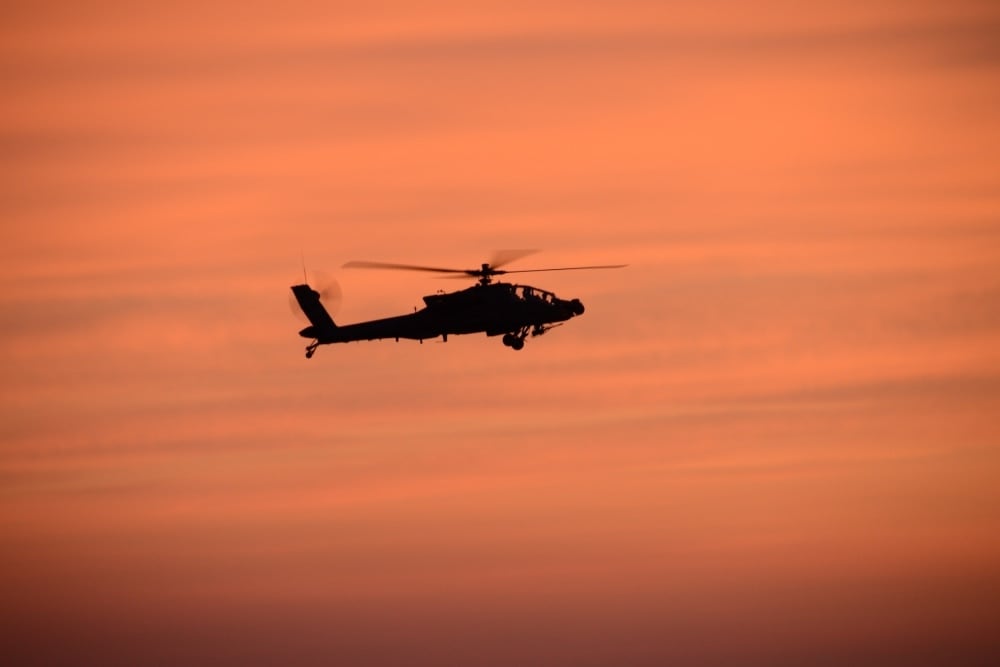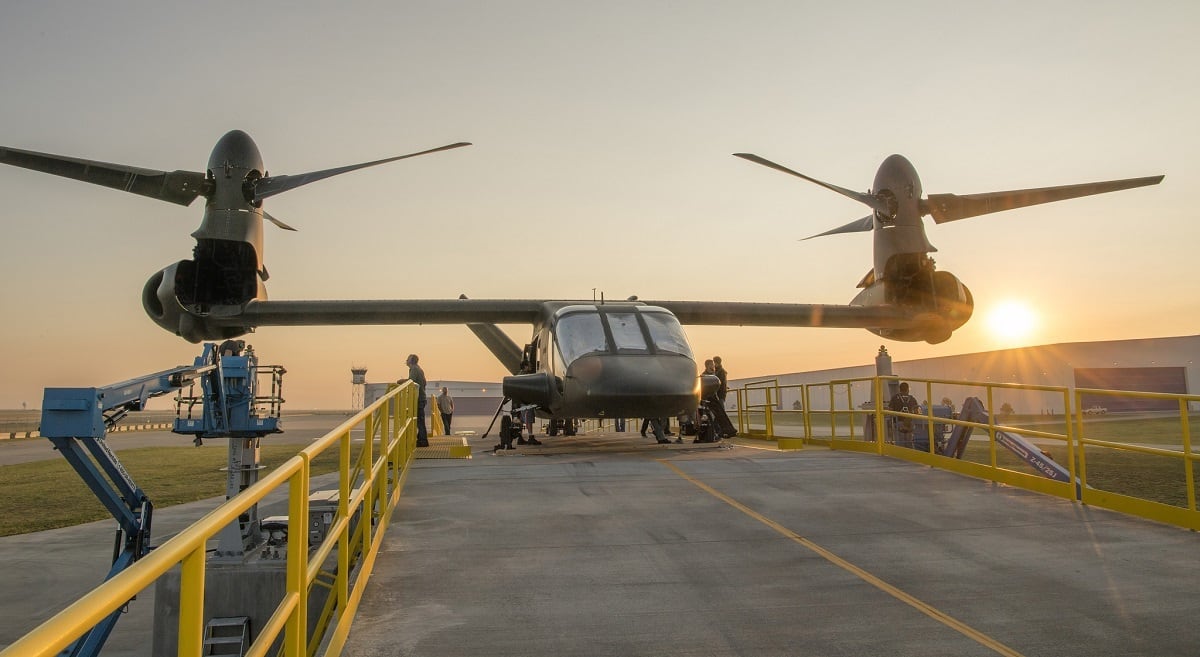HUNTSVILLE, Ala. — The U.S. Army has been talking about procuring a Future Vertical Lift family of helicopters for the better part of a decade, but is wavering on what procurement effort it should first attack.
The service is weighing two options: prioritize the procurement of medium-lift aircraft to replace UH-60 Black Hawk and AH-64 Apaches, or buy an armed reconnaissance helicopter to fill the gap left from the OH-58 Kiowa Warrior’s 2014 retirement.
The Army still expects it will start fielding FVL aircraft in the early 2030s despite some delays in its Joint Multi-Role demonstrator program being conducted in advance of the FVL program of record.
Army Vice Chief of Staff Gen. James McConville and Brig. Gen. Wally Rugen, who is in charge of the service’s new team enlisted to work on vertical lift modernization, indicated at the Association of the U.S. Army’s Global Force Symposium that it’s not about developing a helicopter that can replace the current fleet performing the current mission.
FVL development will be geared, instead, toward the future fight and should align with the Army’s multidomain battle construct — that assumes the force will be fighting across land, air, sea, space and cyber and in contested environments — as well as the new National Defense Strategy.
With that in mind, it will be the Army’s priority to pursue a future attack reconnaissance aircraft that can team in complex ways with mission-specific unmanned aircraft systems as well as a long-range assault helicopter, Rugen said at AUSA.
Up until now, the Army had planned to pursue a medium-lift helicopter that would replace Black Hawks, and potentially Apaches, although the service is still wrestling with where an attack helicopter equivalent to Apache falls in the fleet, if at all.
RELATED

And while the Army said it would prioritize the medium-lift capability, it has repeatedly declared its No. 1 gap is the armed reconnaissance capability currently being filled by expensive and heavy Apaches teamed with UAS.
Rugen and McConville were quick to say the jury is out on whether the service would pursue a long-range assault helicopter before an attack reconnaissance capability, or the other way around, or simultaneously.
The National Defense Strategy prioritizes lethality, McConville told a group of reporters at AUSA, and so the Army is “certainly aligning our future research and development and acquisition efforts to reflect what those priorities are. And when you think about it, certainly you could make the argument that a long-range assault helicopter increases lethality in some ways, but I could make probably a stronger argument that a future attack reconnaissance helicopter that is more lethal is going to provide more lethality to the force.”
The Army is in a position where it doesn’t have to decide what gets prioritized, he added, and the service is keeping its options open and looking at what industry brings to the table.
“We are collaborating with them and giving them ideas and what we would expect as far as cost and performance and, you know, kind of get with the playing field and see what they come back with, and then we will do some more collaboration and we will move forward,” McConville said.
Helo, unmanned requirements
The Army envisions using “purpose-built” UAS, rather than multipurpose, which will consist of several types with attributes that allow the service to “dominate in a contested airspace,” that aren’t easy to spot or detect, that are inexpensive, have swarming capabilities, are runway independent, and can target for Long-Range Precision Fires at operational and tactical levels, Rugen described. The UAS will also be able to deliver lethal or nonlethal effects like electronic attack in order to jam, spoof and kill radars, he added.
These UAS would team in advanced formations with an attack reconnaissance aircraft, Rugen said.
The attack reconnaissance helicopter would need to be sized “to hide in radar clutter, to operate in urban canyons and mega-cities and should be a clean-sheet design, he said.
The aircraft would be optionally manned with autonomy “baked into” the future aircraft and will have improved reach and survivability, Rugen said.
Together, an advanced team of UAS and attack reconnaissance aircraft will be able to work with the ground force and fires teams “to detect and deliver lethal effects, assess those effects and reattack if need be,” according to Rugen.
The long-range assault helicopter will need to have much greater speed, range and endurance than the current fleet. Once the attack reconnaissance aircraft and the UAS dominate an area or corridor, the assault helicopter will be agile and have the speed to “flow through that window of opportunity,” Rugen said.
The assault helicopter will also need to have a significant increase in protection, operate from sanctuary and exploit windows of opportunity, he added.
Every FVL aircraft on the battlefield will have an open-system approach, Rugen said, which will be government-designed and defined specifically so industry can plug capability into the architecture.
RELATED

The fact the Army is seriously focusing on attack reconnaissance capability is good news for some in industry.
While the Army’s technology prototype demonstration being conducted in advance of an FVL program of record focuses on a medium-lift aircraft, Sikorsky, which is now owned by Lockheed Martin, has a smaller aircraft — Raider — which is already flying and would fit in the armed reconnaissance category.
Chris Van Buiten, Sikorsky’s vice president for technology and innovation, recently argued the case for prioritizing a light-attack aircraft as opposed to a medium-lift capability in which long-range assault would fit.
“The concept of doing light first is: First, it fills the urgent need that was kind of created by the departure of the Kiowa Warrior from the fleet that is now filled by the Apache,” he said. “That is a big airplane for the mission for a recon role as forces get pushed back by rapid-reaction-rocket kind of threats and will have to execute at a greater radius. I think the Apache is going to start to struggle in that recon role.”
With Raider is already flying — although the program experienced a hurdle when its first prototype was damaged in a hard landing during test flights — it could be ready to be built and fielded much quicker than a helicopter that has yet been built, he argued.
And “you could argue that FVL light is just a smaller, lower-cost program,” where only hundreds of aircraft would need to be bought instead of thousands,” Van Buiten said. “It might be a prudent way to get the ball rolling, get a win on the board, move FVL forward. It’s kind of a good warmup for a larger FVL program.”
Prioritizing the long-range assault variant also has a good case. But ultimately, FVL is a joint program, and the Army won’t be making its decision independently of the other services involved or without the Office of the Secretary of Defense, which, in the end, has the final say.
Jen Judson is an award-winning journalist covering land warfare for Defense News. She has also worked for Politico and Inside Defense. She holds a Master of Science degree in journalism from Boston University and a Bachelor of Arts degree from Kenyon College.







